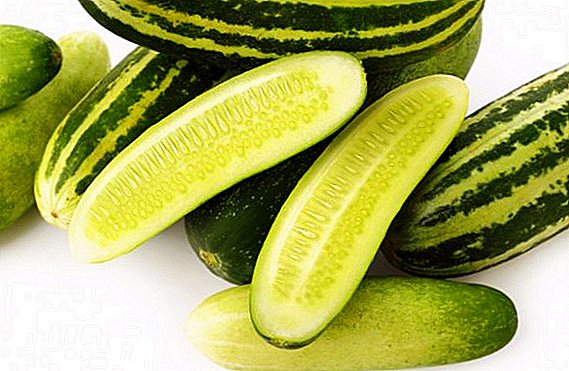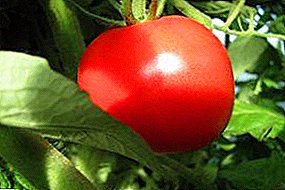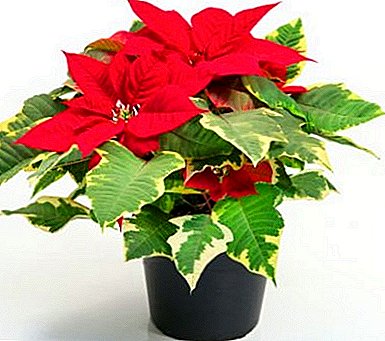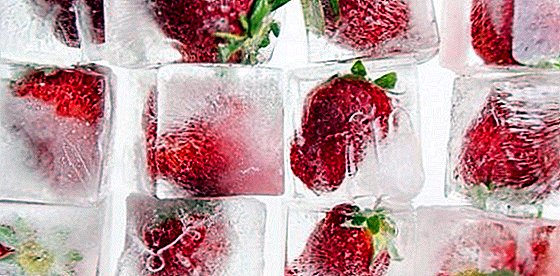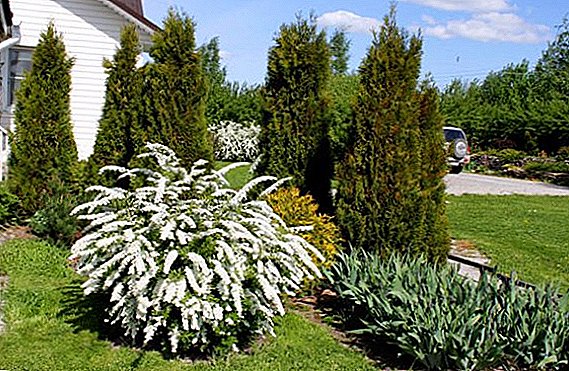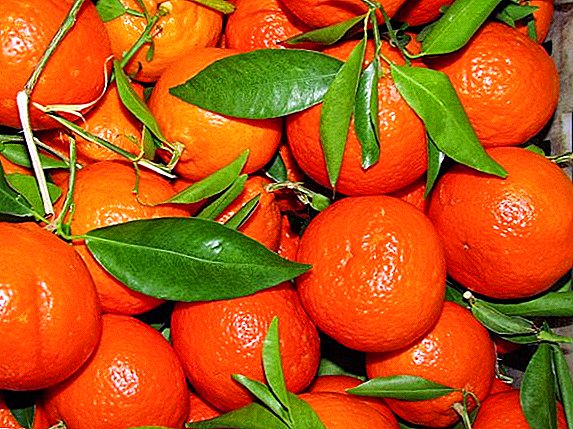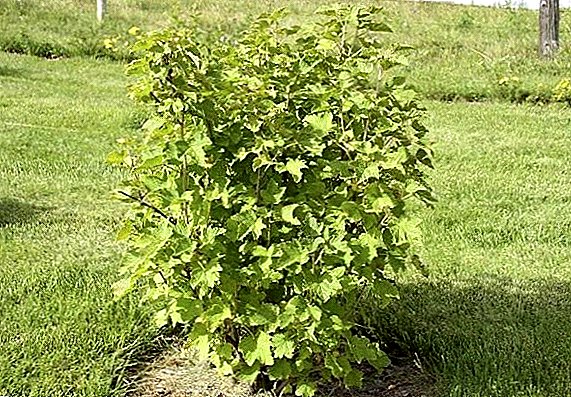 Currant is a delicious fragrant berry, which only a rare summer resident and gardener can do without growing. Berries of black and red currants, which are used in food in raw, dried and thermally processed form, are an excellent source of vitamins and many other useful substances for the human body. The leaves of these plants are also rich in minerals and are used for brewing tea, as spices for preservation. Growing currants on your plot is easy, but this garden crop, like many others, also needs constant care. Let's take a closer look at how to look after her in the fall.
Currant is a delicious fragrant berry, which only a rare summer resident and gardener can do without growing. Berries of black and red currants, which are used in food in raw, dried and thermally processed form, are an excellent source of vitamins and many other useful substances for the human body. The leaves of these plants are also rich in minerals and are used for brewing tea, as spices for preservation. Growing currants on your plot is easy, but this garden crop, like many others, also needs constant care. Let's take a closer look at how to look after her in the fall.
Why special care is important
The main interest of any currant grower is the annual good harvest of large, tasty berries. In order to achieve abundant fruiting, it is necessary to care for plants not only in spring, but also in autumn, since many works carried out after the summer season directly affect the future harvest.
The complex of autumn currant care activities is aimed primarily at ensuring sufficient soil moisture and oxygen access to the root system, as well as at improving and rejuvenating the plant, preparing it for winter.
Did you know? The most famous types of currants are black, red and white, although in fact they are much more: there are orange, purple, yellow and green varieties of this berry.

Berries, twigs and leaves of black, red and white currants have healing properties and are often used in traditional medicine.
How to prepare currants for winter: rules of care
In the autumn, currants require attention and efforts in the following areas:
- Weed control.
- Loosening and watering the soil.
- Fight against diseases and pests.
- Pruning bushes.
- Update and replace old plants.
- Digging and dressing.
- Cold protection.
Treating bushes and soil from fungal diseases and pest control
The negative impact of fungal diseases and pests can often lead not only to the low yield of the plant, but even to the death of a whole bush, so the gardener's attention should be directed primarily to the health status of currants. A thorough inspection of the plants will allow time to identify the threat and effectively eliminate it.
The most common fungal diseases are:
- powdery mildew;
- anthracnose;
- rust (stem and goblet);
- septoriosis;
- terry
 Powdery Mildew on Currants
Powdery Mildew on CurrantsWe advise you to learn how to deal with diseases and pests of currants: glass rust, powdery mildew, red spots on the leaves, shield, bud mite.
The first and main action in detecting a disease is the elimination of diseased leaves and shoots, which must be burned to prevent further spread of the disease. After that, the plant can be treated with appropriate fungicides (nitraphine solution, bordeaux liquid, ammonium nitrate, soda ash).
The most common pests that gladly settle on currant bushes are: bud mites, sawflies and a glass box. In the autumn, to fight them, it is often enough to destroy the infected parts of a plant, followed by digging the soil around it.
Did you know? Previously, the currant was known as "monastic berries", all of it was grown in almost all monasteries.
Pruning bushes
Currant pruning aims at its proper formation for obtaining the best yield. It can be produced in early spring, but in this case there is a risk of missing the moment of budding, and after autumn pruning, the plant will not have to expend forces on the growth of branches that need to be removed in the spring. In addition, in the fall, gardeners traditionally have more free time to do pruning, slowly and not being distracted by planting work.
Learn how to properly trim the currants.
 Young bushes are cut with a preventive sanitary purpose, and old ones - for rejuvenation. For the implementation of pruning need a sharp pruner or garden file.
Young bushes are cut with a preventive sanitary purpose, and old ones - for rejuvenation. For the implementation of pruning need a sharp pruner or garden file.
What is subject to pruning:
- branches affected by fungal diseases or pests;
- old (three- or five-year) weakly fruiting branches;
- Shoots growing inwards and thickening the plant;
- creeping branches on the ground;
- broken and weak branches, giving zero shoots.
Important! Black currants can be pruned after harvest, and other varieties can be cut in late autumn during the dormant period.To activate the young shoots, old branches are cut off near the soil. Slices of thick branches must always be treated with garden pitch.
 To update the bush, it is recommended to prune for three years, annually removing a third of the branches. According to the result of pruning, four biennial and three-year branches should be left, as well as seven one-year shoots. In this way it will turn out to form the perfect currant bush.
To update the bush, it is recommended to prune for three years, annually removing a third of the branches. According to the result of pruning, four biennial and three-year branches should be left, as well as seven one-year shoots. In this way it will turn out to form the perfect currant bush.Branches of varieties with good sprouting are pruned if they exceed 25 cm in length, and in varieties with weak spine formation, only non-mature tops with weak buds are pruned. Bushes of red and white currants are formed in a cup shape, and the length of their branches can be about 1 m.
Currant fertilizer
During the spring and summer, which is characterized by intensive growth of shoots, flowering and fruiting, the nutritional value of the soil under the bushes is significantly reduced. To ensure a good harvest in the coming year in the fall, it is necessary to fertilize currants.
Learn what and how to handle currants in the fall after harvest.This is especially important for plants growing in one place for several years. The best option for feeding is the simultaneous use of organic and mineral fertilizers.
For feeding one bush in a bucket of rotted manure add 100-150 g of superphosphate and 30-40 g of potassium chloride. Then this mixture is evenly scattered around the plant and dug up (slightly under the bush, and deeper outside its crown).
Important! Nitrogen fertilizers to feed the currants in the autumn should not be used, because they provoke the growth of young shoots, which adversely affects the frost resistance of the plant.

Mulching and tillage
The benefits of soil mulching are difficult to overestimate. A layer of mulch provides the root system of the plant with optimal conditions for development: absorption of nutrients, preservation of moisture and a loose state of the soil, allowing the roots to "breathe."
Before autumn mulching, the soil under currant bushes and in between rows should be dug up with a reservoir turnover to a depth of 15 cm. At the same time, directly under the bush, it is necessary to put a shovel with an edge to it and dig it no deeper than 8 cm in order not to damage the root system. It is not necessary to break up layers of the earth that the moisture better was late in the soil.
If the autumn was dry, then before the onset of cold weather, it is necessary to carry out a mandatory prewinter irrigation, because currants are very sensitive to the lack of moisture. To do this, each bush is plentifully watered (from three to five buckets of water), wetting the soil to a depth of 50 cm.
The best grades of currant for your site.
After digging and watering, the ground around the bush with a radius of about 60 cm is mulched with peat or a mixture of sawdust with a glass of wood ash. The layer of mulch for its best efficiency should be at least 5 cm thick.  Mulching with sawdust
Mulching with sawdust
Wrapping a bush from the cold
Traditionally, currant belongs to winter-hardy garden crops that can withstand temperatures down to -25 ° C without additional wrapping. This is true for local varieties that are already adapted to the climatic conditions of their region. European breeding varieties may not tolerate the winter in Siberia and other northern areas, or even die. Therefore, in places with harsh winter frosts, attention should still be paid to wrapping bushes.
The best shelter for currants and other plants is snow. From the first snowfalls you need to start throwing up the snow until the bush is completely covered with a snow coat. However, so that the branches do not break under the weight of the snow cover, it is recommended to carefully bend them to the ground in advance, pinching them with bricks or tiles, or tie them up with a string, giving a spindle shape. In areas where winters are frosty but snowless, currants can be wrapped with needles, special covering materials, drawers, old blankets, etc.
Important! It is impossible to wrap currant bushes in polyethylene and other materials that do not allow air to pass through.After the first spring heat, covering material must be removed so that the currants can release the buds in time. If you overdo the bushes in a sheltered state, the natural vegetative development of the plant can be disrupted, which will have a negative impact on the crop.
 Shelter bushes needles
Shelter bushes needlesWhat you should not do: typical mistakes novice gardeners
Currant is considered to be a rather unpretentious garden plant and on fertile land under good weather conditions it can successfully bear fruit for a long time, but at least a little attention from the gardener is still required for this shrub. Let's consider what mistakes novice gardeners can damage currants:
- Wrong watering. Often inexperienced gardeners water the plants on the leaves from above or use very cold water from the aqueduct. Watering currants, like other plants, should be at the root, using water with an ambient temperature.
- Too deep looseningwhich can damage the root system.
- Breaking off branches instead of pruning causes additional stress to the plant, which reduces its frost resistance.
- Top dressing with fresh manure during the autumn period promotes the active growth of the plant and makes it more vulnerable to cold. In the autumn as a fertilizer, you can only use rotted manure.
- Shelter bushes nonwoven materialsnot breathable.
- Incorrect trimming. Excessive or insufficient pruning, as well as leaving sick and weak shoots, can have a negative effect on the condition of the plant.
- The maintenance of old bushes. With age, the bushes begin to bear less fruit, while timely pruning and rejuvenation can ensure a stable annual yield. In this case, black currants are considered to be old branches older than three years old, while red and white branches are allowed to leave six-year branches in the crown.


